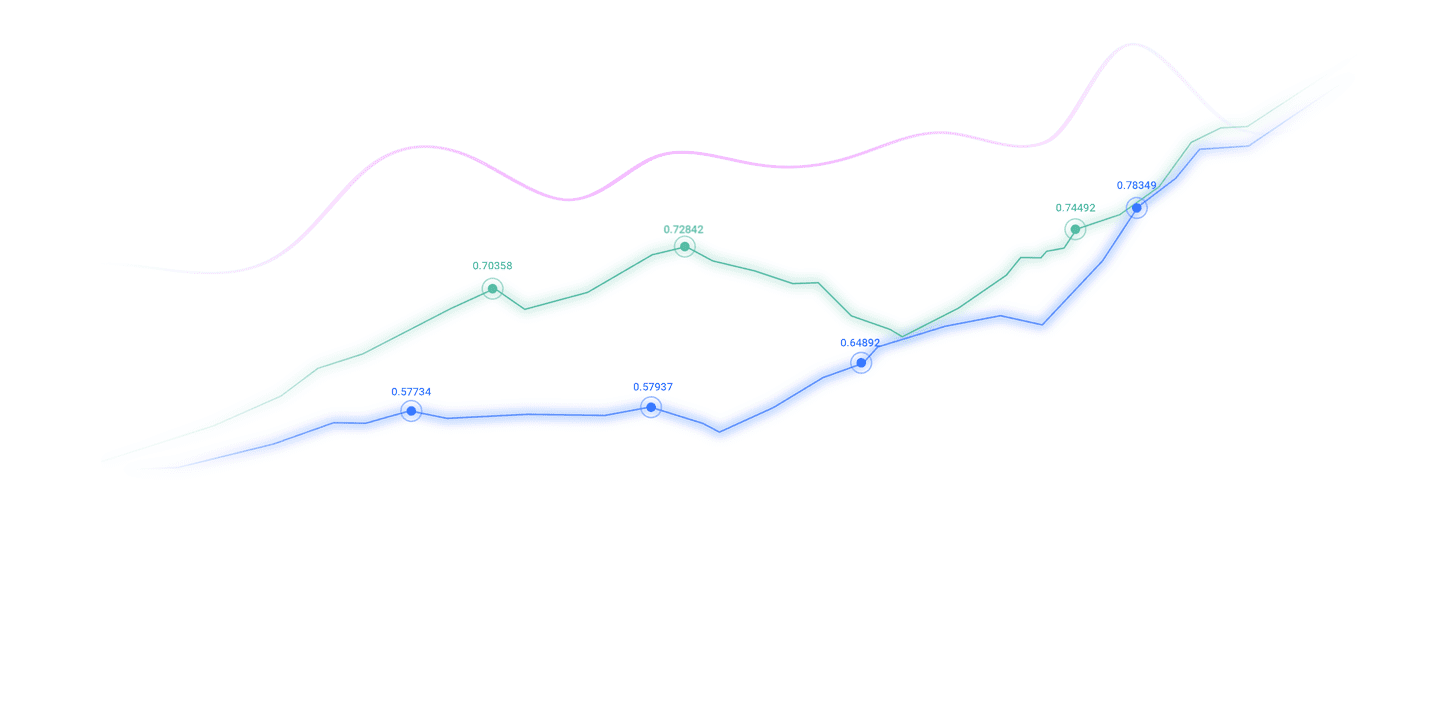Trusted by over 15 Million Traders
The Most Awarded Broker
for a Reason
CATEGORIES
News
- Inflation data boosts Fed's bet on interest rate cuts, gold prices remain stable
- Trump threatens to significantly increase India's tariffs, turning to the servic
- Trump nominates the next bureau director of Labor Statistics, waiting for U.S. i
- 8.13 Analysis of the latest market trends of gold and crude oil and today's excl
- U.S. weak economic data strengthens bets on interest rate cuts, OPEC+ is reporte
market news
A collection of good and bad news affecting the foreign exchange market
Wonderful introduction:
Only by setting off, can you reach your ideals and destinations, only by hard work can you achieve brilliant success, and only by sowing can you reap the rewards. Only by pursuing can you taste upright people.
Hello everyone, today XM Forex will bring you "[XM Forex]: a collection of good and bad news affecting the foreign exchange market". Hope this helps you! The original content is as follows:
1. The U.S. dollar: a long-short game between easing expectations and debt concerns
(1) Positive factors
The consensus on easing within the Federal Reserve has been strengthened: Powell reiterated on the 14th that there is "no preset path" for policy, Governor Bowman clearly expected two more interest rate cuts before the end of the year, and Collins called for further interest rate cuts to deal with the risk of a weakening labor market. The market's pricing probability of a 25 basis point interest rate cut in October has risen to 97%. Loose expectations have pushed U.S. bond yields downward, with the 10-year Treasury yield approaching below 4%, the lowest since April, reducing the attractiveness of U.S. dollar assets.
Expectations for marginal improvement in economic data: The initial value of the one-year U.S. inflation rate in October is expected to fall to 4.6%, lower than the previous value and the expected 4.7%, indicating that inflationary pressure has declined moderately, providing room for the Federal Reserve to ease. Although consumer confidence has hit a 27-year low, ETF capital inflows have exceeded US$1 trillion in a low interest rate environment, and ample market liquidity has provided implicit support for the US dollar.
(2) Negative factors
Debt risks and financial pressures are highlighted: the U.S. debt exceeds US$37.8 trillion, interest payments exceed US$1.2 trillion, and the debt/GDP ratio reaches 99.9%, and will exceed 102% in 2026. The temporary appropriation bill can only maintain government operations until November 21 and does not cover key expenditures such as health care. Uncertainty in political decisions may push up long-term interest rates and depress the dollar.
Weak crude oil suppresses related currency support: Brent crude oil fell to a three-month low of $62.73/barrel, and U.S. www.xmmen.commercial crude oil inventories increased by 3.715 million barrels in a single week. The www.xmmen.commodity currency Canadian dollar was under pressure and weakened. However, the attribute of crude oil pricing being settled in U.S. dollars failed to effectively boost the U.S. dollar, reflecting market concerns about the fundamentals of the U.S. economy..
2. Euro: A volatile pattern of rising inflation and policy ambiguity
(1) Positive factors
Inflation data rebounded beyond expectations: Germany’s inflation rate rose to 2.4% in September, a new high for the year, mainly driven by the expansion of service price increases and the narrowing of energy price declines. Inflation stickiness provides the basis for the European Central Bank to suspend interest rate cuts. The current benchmark interest rate in the Eurozone is still 25 basis points higher than that in the United States, and the interest rate differential advantage provides support for the euro.
Fiscal austerity signals release confidence: The French Prime Minister has clarified the goal of controlling the fiscal deficit rate below 5% in 2026, emphasizing the urgency of cutting public expenditures, showing the tightening of fiscal discipline in the core countries of the Eurozone, which will help alleviate market concerns about debt sustainability and enhance the credit endorsement of the euro.
(2) Negative factors
The European Central Bank's policy statement is ambiguous: Although Lagarde said that the economy and monetary policy are "in good condition", she made it clear that she "has not announced the end of the interest rate cut cycle." The vague policy direction caused market confusion. Coupled with the IMF's warning that the impact of tariffs has weakened global growth prospects, the export-dependent economy of the Eurozone is under pressure, suppressing the upward momentum of the euro.
Weak energy demand and oversupply: OPEC+ continued to increase production by 137,000 barrels per day in November. The pressure of global crude oil oversupply intensified, and the Brent-WTI spread widened to US$3.83 per barrel, reflecting the relative increase in European energy import costs and dragging down the euro zone trade account.
3. Sterling: The two-way pull of weak employment and progress in negotiations
(1) Positive factors
British-EU trade negotiations have made a breakthrough: Negotiations between the UK and the EU on the Northern Ireland trade agreement have made significant progress, and market risk aversion has cooled, pushing EUR/GBP to a one-week low of 0.8715, and the pound has strengthened relatively against the euro. The pound was also supported by the lagged effect of growth in cross-border settlement volumes in the City of London.
The central bank’s gold purchase is linked to the demand for hedging: The Governor of the Bank of England pointed out that the intensifying global economic uncertainty and the central bank’s gold purchase behavior have jointly pushed up the price of gold. There is a certain positive correlation between the pound and gold. The price of gold broke through a new high of US$4,200, which indirectly boosted the pound.
(2) Negative factors
The labor market has deteriorated significantly: the UK unemployment rate climbed to 4.8% in the three months to August, the highest since May 2021, and private sector wage growth slowed to 4.4%, a low since the end of 2021. The weak job market has strengthened expectations for an interest rate cut by the Bank of England in December. The current probability of an interest rate cut has risen to 60%, and the interest rate outlook suppresses the attractiveness of the pound.
Insufficient momentum for economic growth: Affected by U.S. tariff policies and slowing global demand, the UK manufacturing PMI continues to be below the boom-bust line, coupled with weak consumer spending and insufficient endogenous growth momentum, limiting the pound's rebound space.
4. The Japanese Yen and the Swiss Franc: A strong pattern dominated by safe-haven attributes
(1) Positive factors (Japanese Yen)
PoliticalPolitical uncertainty stimulates demand for hedging: Japan's ruling coalition is in turmoil. Capital Economics pointed out that political uncertainty will boost the market's allocation demand for the yen in the short term, although the long-term impact depends on economic fundamentals. At the same time, the risk of global economic fragmentation has intensified, and the Japanese yen, as a traditional safe-haven currency, has received increased capital holdings.
Marginal narrowing of interest rate disadvantage: In anticipation of the Federal Reserve's aggressive interest rate cut, the interest rate gap between the United States and Japan has gradually narrowed from the high point during the year, and the 10-year U.S. bond yield has fallen to around 4%, reducing the attractiveness of Japanese yen carry trades and promoting the return of funds to Japanese yen assets.
(2) Positive factors (Swiss franc)
Directed inflows of safe-haven funds: The negative correlation between the Swiss franc and gold rose to -0.78. Gold prices hit new highs, driving safe-haven funds into the Swiss franc. USD/CHF fell to a two-week low of 1.2492. Switzerland's trade surplus expanded to 3.2 billion Swiss francs in September, with solid economic fundamentals providing support for the strength of the Swiss franc.
Hedging value of European risks: The ambiguity of the European Central Bank's policies and the risk of economic fragmentation in the Eurozone have made the Swiss franc the preferred asset to hedge European geopolitical risks. EUR/CHF maintains a weak consolidation trend of 0.9207.
5. Key events and trading tips
Core monitoring nodes: ① At 02:00 the next day, the Federal Reserve releases the Beige Book of Economic Conditions and debates with Lagarde. Pay attention to the U.S. economic assessment and the European Central Bank's policy signals; ② Federal Reserve Board Governors Milan and Waller have made intensive statements, which may further clarify the pace of interest rate cuts.
Currency pair strategy suggestions:
EUR/USD: Rely on 1.1590 to support short positions and go long, with a target of 1.1650 and a stop loss of 1.1570. Play on the resonance of inflation data and policy differences;
GBP/USD: If it falls below 1.3310, support Support short selling, target 1.3270, stop loss 1.3330, to avoid the risk of weak employment data;
USD/JPY: Mainly short on rallies, build positions in the range of 149.50-149.80, target 148.80, stop loss 150.00, grasp the flow of hedging funds.
Risk warning: If there is a sudden deadlock in U.S. debt negotiations or the geopolitical conflict in the Middle East resumes, it may cause the U.S. dollar and safe-haven currencies to strengthen simultaneously, and positions need to be adjusted in a timely manner.
The above content is all about "[XM Foreign Exchange]: Collection of good and bad news affecting the foreign exchange market". It is carefully www.xmmen.compiled and edited by the editor of XM Foreign Exchange. I hope it will be helpful to your trading! Thanks for the support!
Only the strong know how to fight; the weak are not even qualified to fail, but are born to be conquered. Hurry up and study the next content!
Disclaimers: XM Group only provides execution services and access permissions for online trading platforms, and allows individuals to view and/or use the website or the content provided on the website, but has no intention of making any changes or extensions, nor will it change or extend its services and access permissions. All access and usage permissions will be subject to the following terms and conditions: (i) Terms and conditions; (ii) Risk warning; And (iii) a complete disclaimer. Please note that all information provided on the website is for general informational purposes only. In addition, the content of all XM online trading platforms does not constitute, and cannot be used for any unauthorized financial market trading invitations and/or invitations. Financial market transactions pose significant risks to your investment capital.
All materials published on online trading platforms are only intended for educational/informational purposes and do not include or should be considered for financial, investment tax, or trading related consulting and advice, or transaction price records, or any financial product or non invitation related trading offers or invitations.
All content provided by XM and third-party suppliers on this website, including opinions, news, research, analysis, prices, other information, and third-party website links, remains unchanged and is provided as general market commentary rather than investment advice. All materials published on online trading platforms are only for educational/informational purposes and do not include or should be considered as applicable to financial, investment tax, or trading related advice and recommendations, or transaction price records, or any financial product or non invitation related financial offers or invitations. Please ensure that you have read and fully understood the information on XM's non independent investment research tips and risk warnings. For more details, please click here


































































































